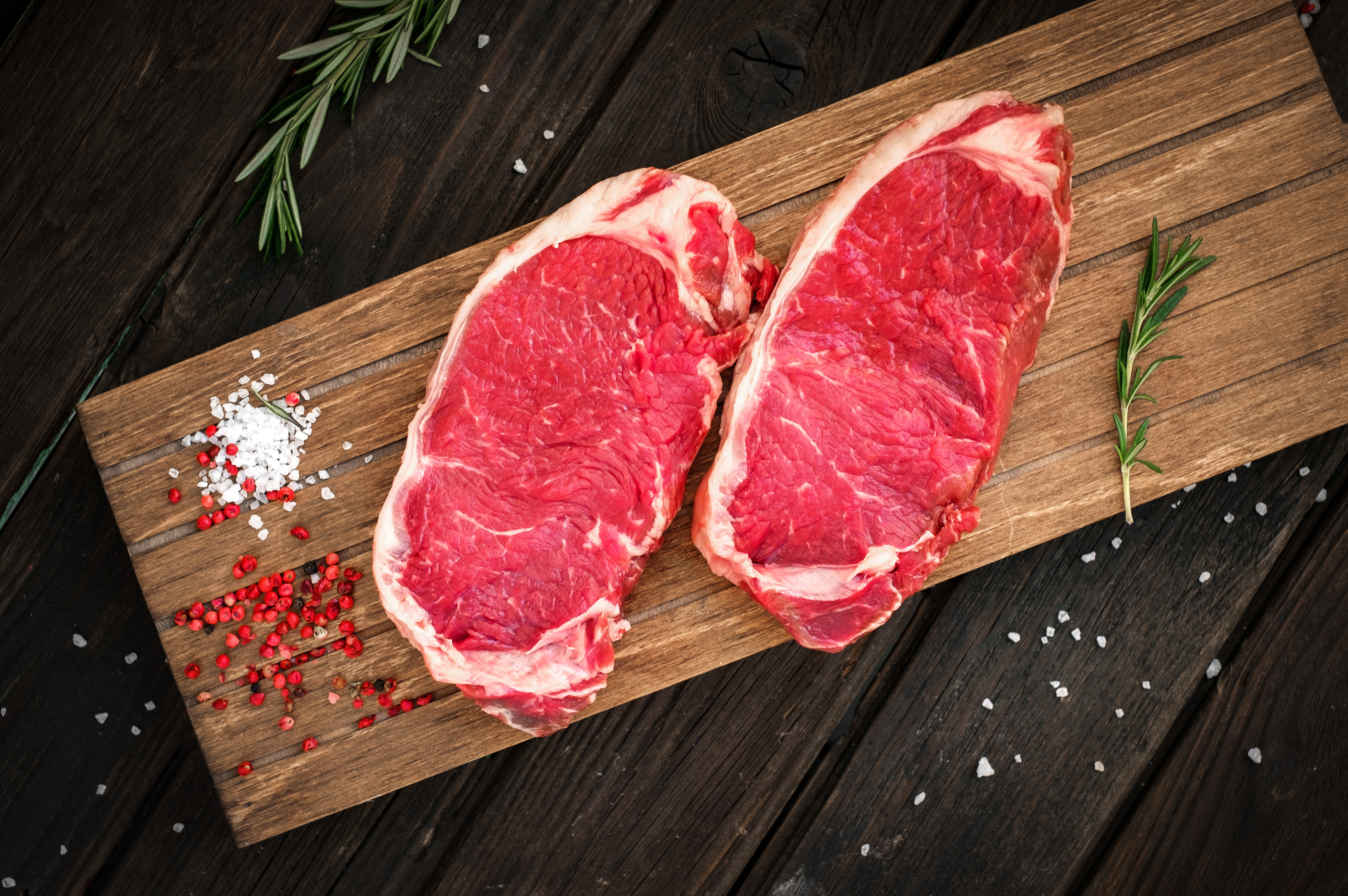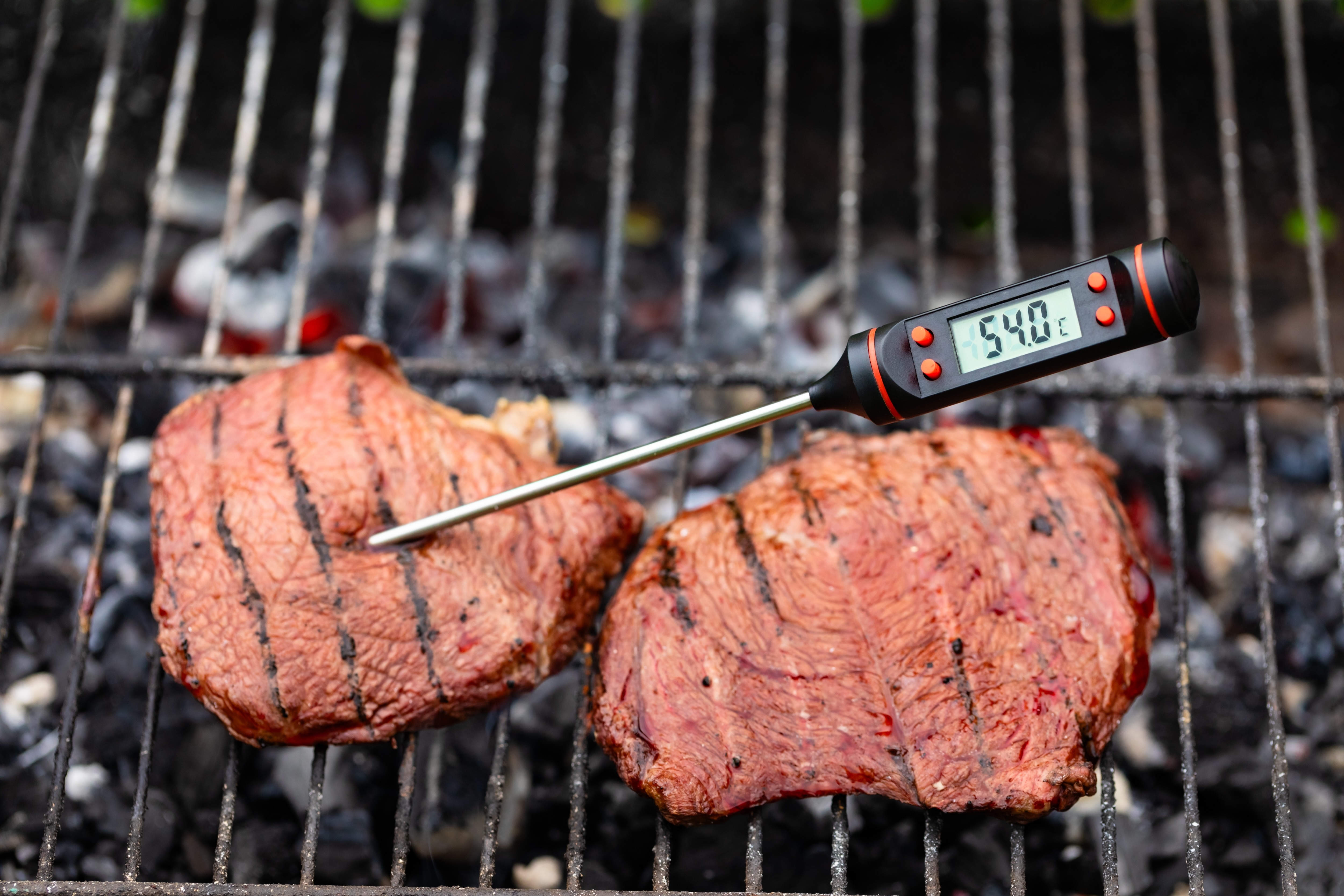Every backyard grill master has their version of steak perfection. For me, that perfect middle ground came into focus the day a guest asked, “Can you make mine medium?” The slight panic was real. I had always shot for medium-rare or well-done — I didn’t even know there was an in-between.
But learning how to cook steak medium turned out to be less about guesswork and more about a few reliable cues and a good meat thermometer. Cooking steak to a juicy medium pink center, warm throughout, and just the right touch of resistance, means paying attention to detail from start to finish.
Start with the right cut and prep

Cooking a medium steak starts with knowing your meat. You can’t just buy any cut, because all of them aren’t ideal, especially when aiming for that precise doneness. When you get done choosing, it’s just as important to Let the steak rest at room temp for 30–45 minutes before cooking.
Best cuts for medium cooking:
- Ribeye: Rich and allows a little room for error, thanks to its marbling
- New York strip: Balanced in fat and flavor
- Sirloin tri tip: Leaner, but still tender when cooked properly
- Filet mignon: Extremely tender, though you’ll need to add a little fat during cooking
Use the right tools and temperature

You don’t need fancy gear, but a couple of basics go a long way. A cast iron skillet and an instant-read thermometer can save the day. Just make sure that you preheat your pan over medium-high heat until it’s smoking hot. You’ll want to use a high smoke-point oil like avocado or canola. For grill lovers, crank the heat on one side and leave the other side cooler for control.
Sear with confidence

Michelin-starred chef Gordon Ramsay shows how to cook steak to a perfect medium. His go-to method involves a hot cast iron, generous seasoning, butter basting with garlic and thyme, and a proper rest. It’s a simple but exquisite approach that ensures juicy, pink-centered steak every time.
When your steak hits the pan, leave it alone. A good crust needs time to develop. A basic cooking timeline for a 1-inch-thick steak is to sear the first side for three to four minutes, flip and cook the other side for three minutes, and then check the temperature by removing it from heat at 130–135 degrees Fahrenheit (it’ll rise a few degrees as it rests). For thicker cuts, consider finishing in a 400-degree Fahrenheit oven after searing both sides. Use your thermometer to pull it right at 135 degrees Fahrenheit for that perfect medium sweet spot.
Rest before you slice
Don’t skip this part. Resting your steak allows the juices to redistribute, throughout the meat, keeping each bite tender instead of dry. Place the steak on a plate or cutting board and cover it loosely with foil. Let it rest for 5–10 minutes before slicing.
Slice against the grain and serve it right
You made it this far — don’t ruin the texture by slicing the wrong way. Always cut against the grain to shorten the muscle fibers and make each bite more tender. Once you got all that down, you should consider pairing your steak with a delicious side such as a dollop of garlic herb butter, crisp roasted veggies, or a pile of golden fries (because why not?). You could go a lot of different directions with this, but these are some personal favorites.
Medium steak is the way to go

Mastering how to cook steak medium is about consistency, not complexity. You’d be surprised how much of a difference it makes between not being too gamey or too dry, as it’s just right in between the two outcomes. When you pay attention to the cut, temp, and timing, you’ll get steak that’s reliably pink in the middle and bursting with flavor.




